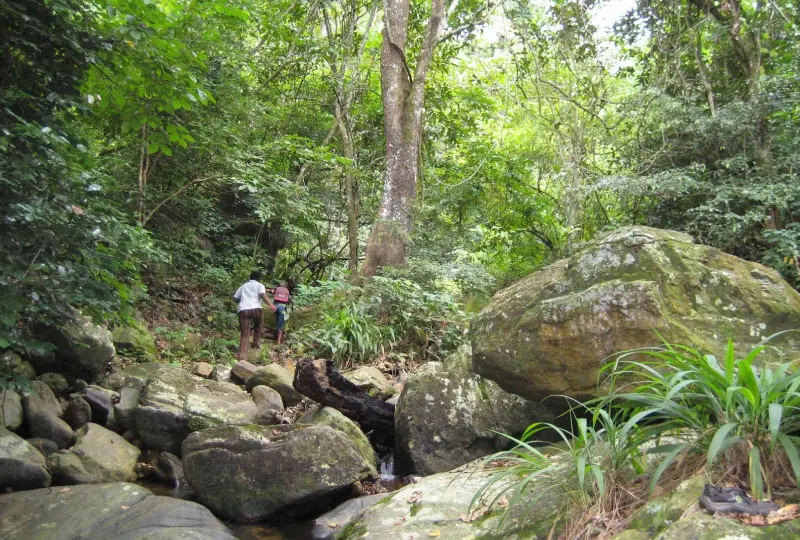Uluguru Mountains Overview
The Uluguru Mountains, located in eastern Tanzania near Morogoro, are part of the Eastern Arc Mountains and are renowned for their breathtaking landscapes and extraordinary biodiversity. Covering approximately 1,450 square kilometers, the Ulugurus rise dramatically from the surrounding lowlands, creating a mosaic of montane forests, valleys, and ridges. The mountains are critically important for both ecological and social reasons, providing essential water catchment areas for nearby communities and serving as a refuge for numerous endemic species. This combination of natural beauty, environmental significance, and cultural heritage makes the Uluguru Mountains a prime destination for eco-tourists, hikers, researchers, and nature enthusiasts seeking an immersive experience in Tanzania’s highlands.
The Uluguru Mountains are celebrated for their rich biodiversity and high level of endemism. Their montane forests host rare species such as the Uluguru violet-backed sunbird, Uluguru bushshrike, and various endemic plants, including unique orchids and African violets. Rivers and waterfalls cascading through the mountains support lush vegetation and create spectacular scenic vistas. Birdwatchers, botanists, and wildlife enthusiasts find the Ulugurus particularly rewarding due to their combination of endemic species and accessible trails that traverse forested slopes, ridge tops, and cultivated areas, revealing both ecological and cultural layers of the landscape.
Visitors to the Uluguru Mountains can enjoy a range of activities including hiking, guided forest walks, cultural immersion in nearby villages, and eco-tourism programs. Trails vary from moderate walks to challenging multi-day treks that lead to panoramic viewpoints overlooking Morogoro and the surrounding lowlands. Local communities play an integral role in conservation and tourism initiatives, offering visitors opportunities to experience traditional agricultural practices, sustainable forest management, and cultural heritage. The Ulugurus provide a unique blend of adventure, education, and scenic tranquility, making them a must-visit destination for travelers seeking authentic highland experiences in Tanzania.
Where are the Uluguru Mountains located?
The Uluguru Mountains are located in eastern Tanzania, near the city of Morogoro. They form part of the Eastern Arc Mountains, a chain of ancient highlands that span Kenya and Tanzania. The mountains are accessible by road from Morogoro town, which serves as the main base for hiking, guided tours, and eco-tourism activities.
What makes the Uluguru Mountains unique?
The Uluguru Mountains are unique due to their dramatic landscapes, exceptional biodiversity, and high level of endemic species. Unlike other Tanzanian mountains, the Ulugurus are relatively accessible while still offering pristine montane forests, waterfalls, and ridge-top views. Their integration of ecological significance with local cultural practices makes them both a conservation priority and an engaging destination for eco-tourism.
What wildlife can be observed in the Uluguru Mountains?
The Ulugurus host a variety of endemic and rare species. Visitors may encounter birds such as the Uluguru violet-backed sunbird, Uluguru bushshrike, and other forest-dependent species. Mammals include primates, small forest-dwelling rodents, and occasional sightings of duikers. The flora is equally remarkable, with endemic orchids, African violets, and diverse ferns. Forest trails provide opportunities to observe this biodiversity up close in its natural habitat.
When is the best time to visit the Uluguru Mountains?
The dry season, from June to October, is ideal for hiking and trekking, as trails are more navigable and weather conditions are favorable. The wet season, from November to May, brings lush greenery, flowing waterfalls, and vibrant forest life, though trails may be muddy and more challenging. Both seasons offer unique experiences for hikers, photographers, and wildlife enthusiasts.
How can travelers access the Uluguru Mountains?
Visitors can reach the Uluguru Mountains by road from Morogoro, approximately a 30–60-minute drive depending on the trailhead. Guided tours and eco-tourism packages are available from Morogoro town, which provides accommodation and local expertise. Many travelers combine Uluguru treks with cultural visits to nearby villages, creating a rich and immersive experience.
What activities are available in the Uluguru Mountains?
Popular activities include hiking, guided forest walks, birdwatching, nature photography, and cultural immersion in local villages. Multi-day treks provide opportunities to explore ridge lines, waterfalls, and forested valleys. Visitors can also participate in eco-tourism and conservation initiatives that focus on sustainable land use, forest preservation, and community development.
Where can travelers stay near the Uluguru Mountains?
Accommodation options include eco-lodges, guesthouses, and community-run homestays in Morogoro and nearby villages. Many lodges offer guided treks, cultural tours, and transportation to trailheads. Staying near the mountains allows visitors to experience sunrise or sunset hikes and to immerse themselves in the natural and cultural surroundings.
How do the Uluguru Mountains compare to other Tanzanian mountain ranges?
Compared to Kilimanjaro or Udzungwa Mountains, the Ulugurus are lower in elevation but more accessible and less frequented by tourists, providing a more intimate and authentic highland experience. Their combination of endemic flora and fauna, scenic ridges, and cultural interactions with local communities makes them unique among Tanzania’s Eastern Arc ranges.
Is it safe to visit the Uluguru Mountains?
Yes, the Uluguru Mountains are safe for visitors when standard precautions are followed. Hiking with a guide is recommended to navigate forest trails safely and gain local insights. Visitors should wear appropriate footwear, carry water, follow trail signs, and respect wildlife and local communities to ensure a secure and enjoyable experience.

